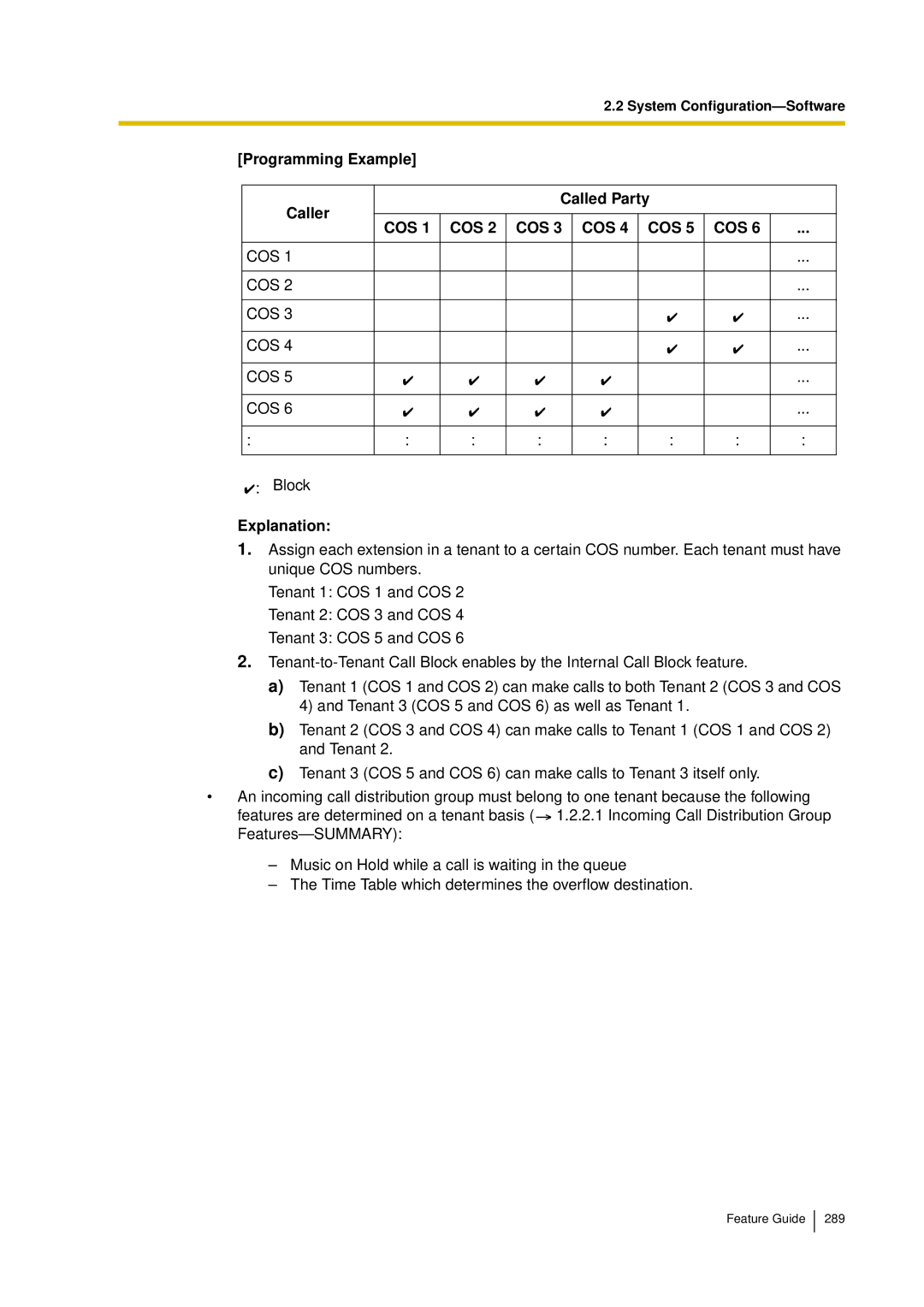
|
|
|
| 2.2 System | ||||
[Programming Example] |
|
|
|
|
|
| ||
Caller |
|
| Called Party |
|
| |||
COS 1 | COS 2 | COS 3 | COS 4 | COS 5 | COS 6 | ... | ||
| ||||||||
COS 1 |
|
|
|
|
|
| ... | |
COS 2 |
|
|
|
|
|
| ... | |
COS 3 |
|
|
|
|
|
| ... | |
COS 4 |
|
|
|
|
|
| ... | |
COS 5 |
|
|
|
|
|
| ... | |
COS 6 |
|
|
|
|
|
| ... | |
: | : | : | : | : | : | : | : | |
![]() : Block
: Block
Explanation:
1.Assign each extension in a tenant to a certain COS number. Each tenant must have unique COS numbers.
Tenant 1: COS 1 and COS 2
Tenant 2: COS 3 and COS 4
Tenant 3: COS 5 and COS 6
2.
a)Tenant 1 (COS 1 and COS 2) can make calls to both Tenant 2 (COS 3 and COS 4) and Tenant 3 (COS 5 and COS 6) as well as Tenant 1.
b)Tenant 2 (COS 3 and COS 4) can make calls to Tenant 1 (COS 1 and COS 2) and Tenant 2.
c)Tenant 3 (COS 5 and COS 6) can make calls to Tenant 3 itself only.
•An incoming call distribution group must belong to one tenant because the following features are determined on a tenant basis ( ![]() 1.2.2.1 Incoming Call Distribution Group
1.2.2.1 Incoming Call Distribution Group
–Music on Hold while a call is waiting in the queue
–The Time Table which determines the overflow destination.
